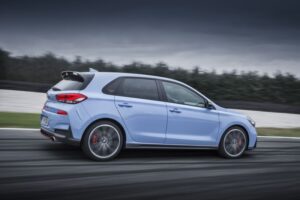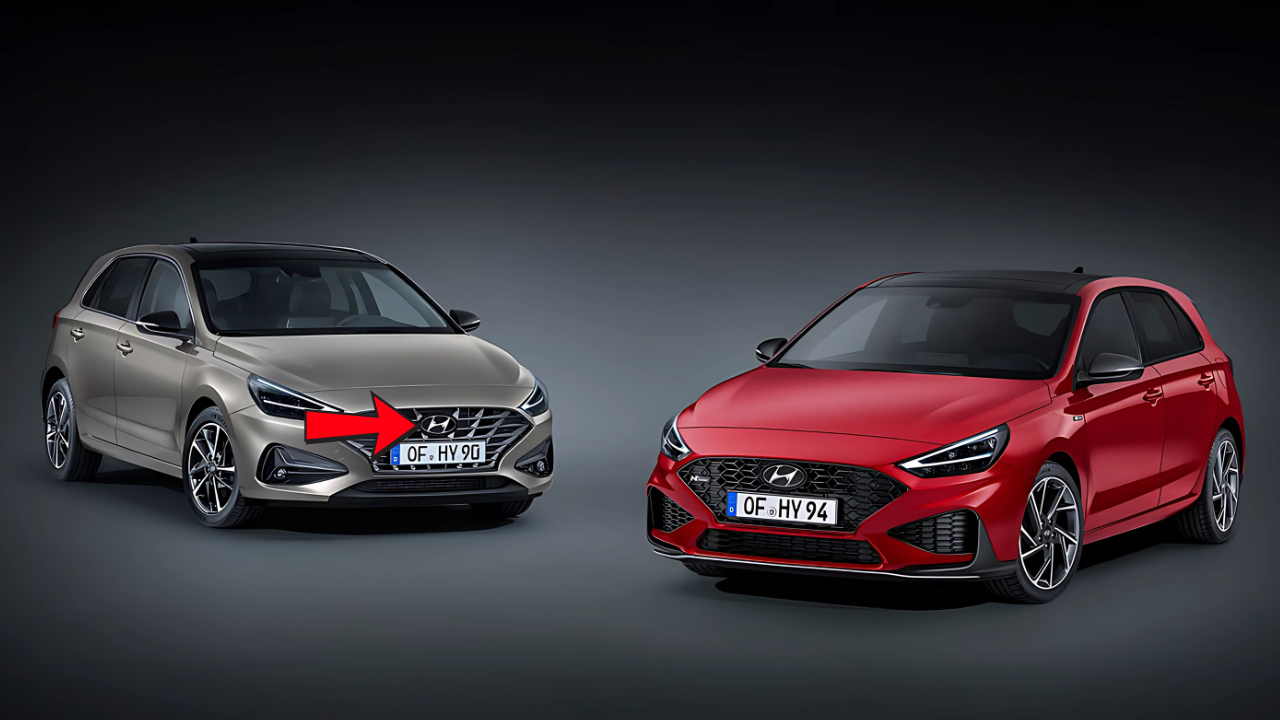The Hyundai i30 has long been a favorite among Australian car buyers, clinching the title of the nation’s best-selling small car in 2023 with 20,626 units sold, outpacing the Toyota Corolla. For 2025, Hyundai has unveiled a second facelift for the i30 hatchback, introducing a refreshed design, advanced mild-hybrid technology, and a suite of new safety and tech features. However, with production shifting from South Korea to the Czech Republic, the i30 now faces a significant price hike, starting at $36,000 AUD (before on-road costs) for the N Line trim, as base models like the Active and Elite have been discontinued. This article dives into the 2025 Hyundai i30’s updates, pricing, features, and its position in Australia’s competitive hatchback market, exploring whether it remains a top choice despite the steeper cost.
Pricing and Trim Levels
The 2025 Hyundai i30 hatchback sees a dramatic price increase, driven by its European production, which incurs a 5% import tariff, higher shipping costs, and the adoption of a more complex mild-hybrid powertrain. The range now starts with the N Line at $36,000 AUD (before on-road costs), a $3,500 jump from the 2024 N Line, while the N Line Premium tops out at $43,990 AUD drive-away. The discontinuation of the Base, Active, and Elite trims eliminates cheaper entry points, previously starting at $24,000, making the i30 less accessible for budget-conscious buyers. The high-performance i30 N, still built in the Czech Republic, starts at $50,000, up $3,800 from its predecessor.
The following table outlines the 2025 i30 hatchback pricing in Australia:
|
Trim |
Price (AUD, before on-road costs) |
Powertrain |
Transmission |
|---|---|---|---|
|
N Line |
$36,000 |
1.5L Turbo Mild-Hybrid (118kW/253Nm) |
7-Speed DCT or 6-Speed Manual |
|
N Line Premium |
$41,000 |
1.5L Turbo Mild-Hybrid (118kW/253Nm) |
7-Speed DCT |
|
N |
$50,000 |
2.0L Turbo Petrol (206kW/392Nm) |
6-Speed Manual or 8-Speed DCT |
|
N Premium (no sunroof) |
$53,500 |
2.0L Turbo Petrol (206kW/392Nm) |
6-Speed Manual or 8-Speed DCT |
|
N Premium (with sunroof) |
$55,500 |
2.0L Turbo Petrol (206kW/392Nm) |
6-Speed Manual or 8-Speed DCT |
Note: Prices exclude on-road costs unless specified. Premium paint adds $595.
The price hike has sparked debate, with some buyers questioning whether the updates justify the cost, especially as rivals like the Toyota Corolla Hybrid start at $36,443 drive-away. Hyundai counters with a richer feature set, including standard leather-suede seats and a 10.25-inch digital cluster in the N Line, but the absence of budget trims may push some buyers toward competitors like the Mazda 3 or Kia Cerato.
Exterior Design Refresh
The 2025 i30 hatchback sports a subtle yet sportier exterior update, aligning its look with Hyundai’s modern design language. The front grille features a new honeycomb pattern, flanked by sleeker LED headlights with V-shaped daytime running lights. Revised bumper inserts and fog light surrounds enhance the aggressive stance, while a more angular rear chrome insert adds sophistication. The N Line models stand out with dark metal accents, 18-inch alloy wheels, and a lower central grille with a 3D pattern, evoking performance-inspired aesthetics. New color options, including Ecotronic Grey, Meta Blue, and Cypress Green, replace older shades, offering fresh personalization.

The i30 N hot hatch gets unique tweaks, including red accents on the front bumper and side skirts, matte black Hyundai badges, and a matte grey finish for its 19-inch forged alloy wheels. While not a full redesign, these changes keep the i30 visually competitive against the Mazda 3’s swoopy lines and the Corolla’s understated style. Critics note the updates are mild, but the i30’s conventional shape ensures excellent visibility and practicality, unlike some rivals with sportier, less practical profiles.
Interior Upgrades and Comfort
Inside, the 2025 i30 hatchback refines its cabin with premium touches and improved technology. The N Line introduces supportive front seats sourced from the i30 N, trimmed in leather and suede with red stitching, though they may feel snug for larger occupants. A gloss-black center console, new seat patterns, and LED cabin lighting elevate the ambiance. The N Line Premium adds a panoramic sunroof, heated and ventilated front seats, and a heated steering wheel for added luxury. Three USB-C ports (one front, two rear) replace USB-A, catering to modern connectivity needs.
The i30’s interior retains its spacious layout, with a 381L boot expandable to 1,301L, outpacing the Corolla’s 333L. Rear legroom and visibility remain strong, thanks to the conventional hatchback shape. However, the infotainment system, while functional, uses older-generation tech compared to Hyundai’s newer models like the Tucson. The 10.25-inch touchscreen supports wired Apple CarPlay, Android Auto, and Bluelink connected services, offering remote climate control, vehicle tracking, and OTA updates. The i30 N adds Alcantara inserts, blue stitching, and a dedicated N performance display, enhancing its sporty appeal.
Technology and Safety Enhancements
The 2025 i30’s tech upgrades center on a new 10.25-inch digital instrument cluster, replacing the analog dials in base models and offering crisp, customizable graphics. The i30 N’s cluster includes an N-specific layout for performance data like lap times and torque distribution. Highway Driving Assist, combining adaptive cruise control and lane-centering, is standard on Premium trims, while all models gain enhanced autonomous emergency braking with intersection support, rear occupant alerts, and intelligent speed limit assist.
However, the i30’s five-star ANCAP safety rating from 2017 expires in December 2024, and its three-star rating for the sedan variant raises concerns about its crash performance under modern criteria. Hyundai’s commitment to safety remains evident, but buyers may want to await updated testing. The Bluelink app, with features like automatic collision notification and live traffic updates, adds convenience, though wireless CarPlay/Android Auto is absent, lagging behind some rivals.
Powertrain and Performance
The 2025 i30 hatchback introduces a 1.5L turbocharged four-cylinder engine with 48V mild-hybrid technology, producing 118kW and 253Nm. This replaces the 2.0L non-turbo (120kW/203Nm) and 1.6L turbo (150kW/265Nm) engines, offering improved fuel efficiency (around 6.0L/100km) but less power than the outgoing N Line’s 1.6L. Paired with a seven-speed dual-clutch transmission (DCT) or a six-speed manual, it delivers solid performance, though the power cut may disappoint enthusiasts. The manual option, rare in this segment, accounts for 5-10% of sales, catering to purists.
The i30 N retains its potent 2.0L turbo engine (206kW/392Nm), with a six-speed manual or eight-speed DCT, hitting 0-100km/h in about 5.4 seconds. Features like the N Grin Shift button for max power and larger brakes from the 1.6L N Line enhance its track-ready dynamics. While rivals like the Volkswagen Golf GTI offer similar thrills, the i30 N’s raw edge and Australia-exclusive full N range make it a standout. Fuel economy ranges from 6.0L/100km (N Line) to 8.5L/100km (N Premium).
Competitive Positioning
The 2025 i30 faces stiff competition from the Toyota Corolla Hybrid ($36,443 drive-away), Mazda 3 ($30,320), and Kia Cerato ($27,060). The Corolla’s hybrid efficiency (4.0L/100km) and reliability appeal to practical buyers, while the Mazda 3’s premium interior and handling attract style-conscious drivers. The Cerato offers better value with lower pricing and similar features. The i30’s strengths—spaciousness, sporty N Line styling, and manual option—set it apart, but its higher price and aging platform may deter some. The Volkswagen Golf Mk 8.5, starting at $39,000, remains a pricier but refined alternative.
The i30’s shift to European production and mild-hybrid tech aligns with global emissions trends, but its price hike risks alienating buyers in a segment where affordability matters. The i30 N, however, remains a performance bargain, especially as Australia is the only market globally to offer Hyundai’s full N lineup, including the i20 N, i30 Sedan N, and Ioniq 5 N.
Market Availability and Ownership
The 2025 i30 hatchback is available in Australia from August 2024, with deliveries underway. Hyundai reports around 1,000 units in stock and 300 more en route, suggesting stable supply. The i30 is backed by a five-year, unlimited-kilometer warranty, a lifetime service plan detailing costs up to 21 years, and 12 months of roadside assistance, renewable with dealer servicing. Resale values are bolstered by Hyundai’s strong brand reputation and feature-rich trims.
Looking Forward
The 2025 Hyundai i30 facelift refines Australia’s best-selling hatchback with a sportier look, smarter tech, and a fuel-efficient mild-hybrid powertrain. The new 10.25-inch digital cluster, enhanced safety features, and Bluelink connectivity modernize the aging platform, while the i30 N remains a thrilling option for enthusiasts. However, the $12,000 price increase, driven by European production and the axing of base trims, challenges its value proposition against rivals like the Corolla and Mazda 3. For buyers prioritizing style, space, and a manual option, the i30 N Line delivers, but budget-conscious shoppers may look elsewhere. As Hyundai transitions toward electric models, the 2025 i30 hatchback keeps the nameplate relevant, though its higher cost demands careful consideration. Visit a Hyundai dealer to test drive and explore drive-away deals.

